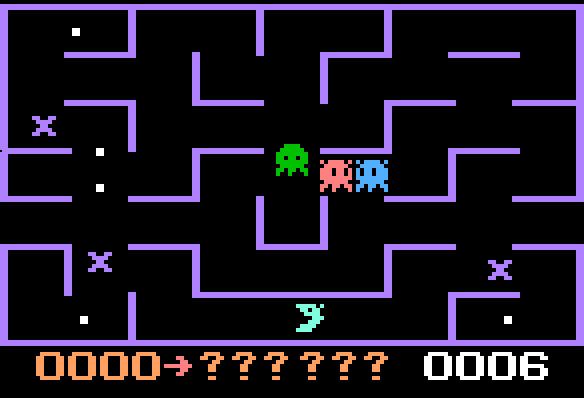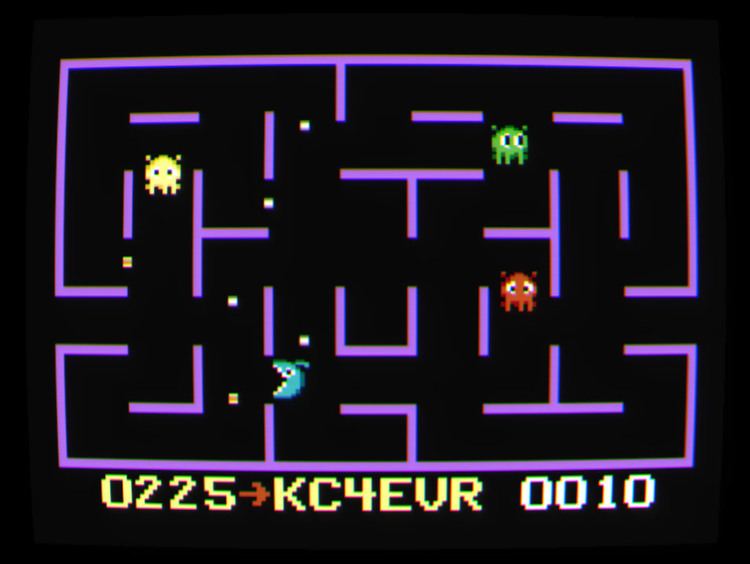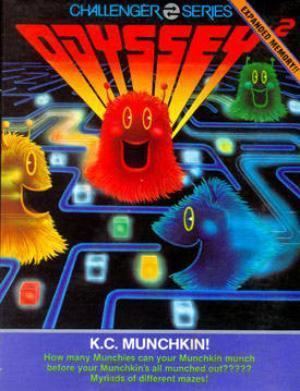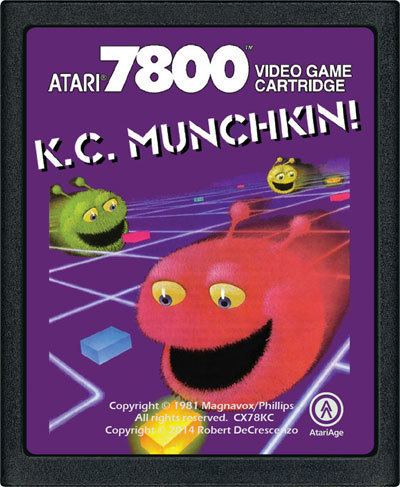10 /10 1 Votes
Designer(s) Ed Averett Initial release date 1981 | 5/5 Amazon Genre(s) Maze Publishers Magnavox, Philips | |||||||||||||||||||||||||||||||||
 | ||||||||||||||||||||||||||||||||||
Platforms Magnavox Odyssey², Philips Videopac + G7400 Similar Crazy Chase, Pickaxe Pete, Quest for the Rings, Space Monster, Invaders from Hyperspace! | ||||||||||||||||||||||||||||||||||
Munchkin is cartridge number 38 in the official Philips line of games for the Philips Videopac. In North America for the Magnavox Odyssey² it was called K.C. Munchkin!, an inside reference to then president of Philips Consumer Electronics Kenneth C. Menkin.

Designed and programmed by Ed Averett, Munchkin is very heavily based on Namco's 1980 arcade game Pac-Man, but not a direct clone. It was however, similar enough for Atari to sue Philips and force them to cease production of Munchkin. Atari was exclusively licensed to produce the first play-at-home version of Pac-Man, but Munchkin hit store shelves in 1981, a year before Atari's game was ready. Atari initially failed to convince a U.S. district court to halt the sale of Munchkin, but ultimately won its case on appeal. In 1982, the appellate court found that Phillips had copied Pac-Man and made alterations that "only tend to emphasize the extent to which it deliberately copied the Plaintiff's work." The ruling was one of the first to establish how copyright law would apply to the look and feel of computer software.

Gameplay differences
Munchkin plays much like Pac-Man, with the following key differences:


After Munchkin was forced off the market, Philips released a sequel called Crazy Chase (K.C.'s Krazy Chase! in the U.S.) which implicitly depicts the conflict between Phillips and Atari by pitting the Munchkin character against an insect-like, tree-eating opponent called the Dratapillar, which very strongly resembles the antagonist of Atari's Centipede. In Crazy Chase's maze, the Munchkin character powers up and advances not by eating pills, but by devouring the Dratapillar's segmented body. Redesigned to avoid another copyright dispute, the Munchkin character rolls through Crazy Chase's mazes without the continuous chomping motion characteristic of Pac-Man.

